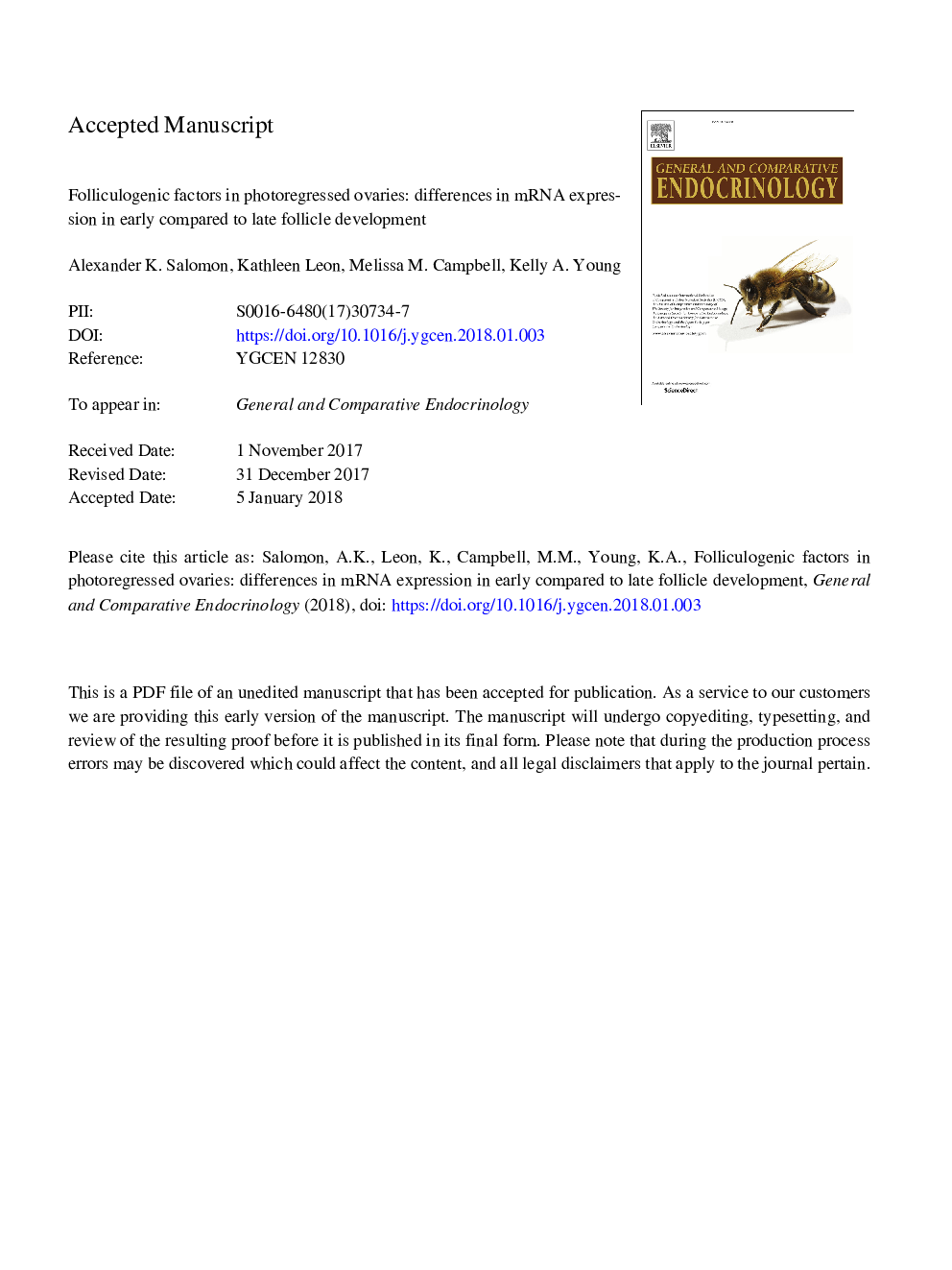| Article ID | Journal | Published Year | Pages | File Type |
|---|---|---|---|---|
| 8631062 | General and Comparative Endocrinology | 2018 | 30 Pages |
Abstract
The early stages of ovarian folliculogenesis generally progress independent of gonadotropins, whereas later stages require signaling initiated by FSH. In Siberian hamsters, cycles of folliculogenesis are mediated by changes in photoperiod which depress the hypothalamic pituitary gonadal axis. Reduced gonadotropins lead to decreases in mature follicle development and ovulation; however, early stages of folliculogenesis have not been explored in regressed ovaries. We hypothesized that intraovarian factors that contribute predominantly to later stages of folliculogenesis would react to changes in photoperiod, whereas factors contributing to earlier stages would not change. To probe if the early stages of folliculogenesis continue in the photoinhibited ovary while late stages decline, we measured the mRNA abundance of factors that interact with FSH signaling (Fshr, Igf1, Cox2) and factors that can function independently of FSH (c-Kit, Kitl, Foxo3, Figla, Nobox, Sohlh1, Lhx8). While plasma FSH, antral follicles, and corpora lutea numbers declined with exposure to inhibitory photoperiod, the numbers of primordial, primary, and secondary follicles did not change. Expression of factors that interact with FSH signaling changed with changes in photoperiod; however, expression of factors that do not interact with FSH were not significantly altered. These results suggest that the photoinhibited ovary is not completely quiescent, as factors important for follicle selection and early follicle growth are still expressed in regressed ovaries. Instead, the lack of gonadotropin support that characterizes the non-breeding season appears to inhibit only final stages of folliculogenesis in Siberian hamsters.
Keywords
Related Topics
Life Sciences
Biochemistry, Genetics and Molecular Biology
Endocrinology
Authors
Alexander K. Salomon, Kathleen Leon, Melissa M. Campbell, Kelly A. Young,
